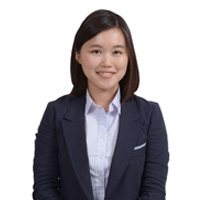Reasons why so many in 20s, women contract virus in S. Korea
By Ahn Sung-miPublished : March 3, 2020 - 16:01

The number of COVID-19 cases in South Korea is fast approaching 5,000 and paints a rather peculiar picture of patient demographics: 20-somethings make up the biggest age bracket, and women clearly outnumber men.
According to data from the Korea Centers for Disease Control and Prevention, of the country’s total 4,812 confirmed cases as of Tuesday afternoon, people in their 20s accounted for 29.4 percent, or 1,417 cases, followed by those in their 50s at 19.8 percent (952 cases).
By gender, 62.4 percent, or 3,002, were female, whereas 1,810 or 37.6 percent were male.
This departs from the World Health Organization’s observations on coronavirus cases in China, which showed nearly 78 percent of the infected were from 30 to 69 years old, with the median age at 51.
According to officials at the KCDC, this is largely due to the fact that most cases here are linked to a particular religious group, the Shincheonji Church of Jesus. Around 60 percent of total cases are traceable to the Christian sect’s branch in Daegu.
“Women in their 20s-30s reportedly make up a large amount of Shincheonji followers, and it is showing in the high percentage of COVID-19 cases in those age groups,” KCDC director Jung Eun-kyeong said at a news briefing.
Local reports have said Shincheonji targets younger people aggressively with clandestine evangelistic activities, and that nearly 60 percent of its worshippers are thought to be in their 20s and 30s.
One possible explanation for the greater number of infections among women can be found in Korea’s patient No. 31, a 61-year-old female Shincheonji follower who contracted the first identified infection within the church. She is suspected to have spread the virus at church services she attended in Daegu.
Observers say it is likely that she was in contact with more female church members, as men and women sit separately at Shincheonji services.
Of all COVID-19 patients in Korea, people in their 20s made up the greatest number with 1,417 cases (29.4 percent), followed by people in their 50s with 952 (19.8 percent), people in their 40s with 713 (14.8 percent), people in their 60s with 597 (12.4 percent), people in their 30s with 578 (14.8 percent), people in their 70s with 224 (4.7 percent), people 10-19 years old with 204 (4.2 percent), people over 80 at 93 cases (1.9 percent) and children under 10 with 32 (0.7 percent).
By Ahn Sung-mi (sahn@heraldcorp.com)







![[Today’s K-pop] Blackpink’s Jennie, Lisa invited to Coachella as solo acts](http://res.heraldm.com/phpwas/restmb_idxmake.php?idx=644&simg=/content/image/2024/11/21/20241121050099_0.jpg&u=20241121172748)










![[Today’s K-pop] Babymonster logs 100m views with ‘Drip’ music video](http://res.heraldm.com/phpwas/restmb_idxmake.php?idx=642&simg=/content/image/2024/11/22/20241122050051_0.jpg&u=20241122172213)